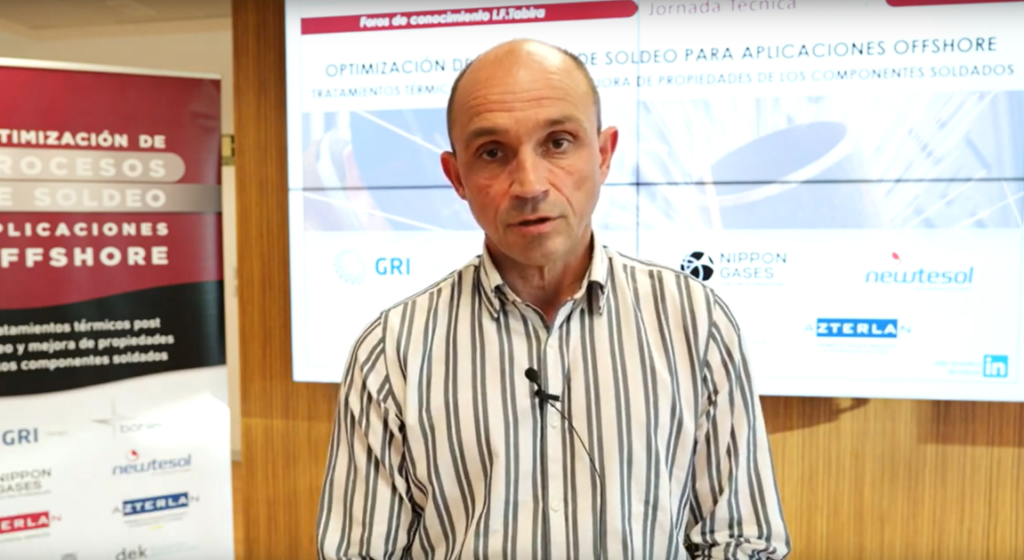The consortium of the MINAKU research project, led by AZTERLAN Metallurgy Research Centre, is working on the development of new cyber-physical systems that will allow the obtention of key data through embedded sensors at different depths of the surface of metallic components. This innovative approach is inspired in the nervous systems of human skin.
Being able to monitor the performance and integrity of components in a simple way and without the use of destructive methods, offers significant opportunities that range from obtaining information about their health or soundness and their real operation conditions, to the detailed observation of their working environments. This has a special relevance in complex processes as well as in extraordinarily hostile environments (high thermal requests, high loads, corrosion…) and difficult access zones. For this kind of needs, the implementation of cyber-physical systems is a promising working line; however, it is not yet very developed in the field of metallic materials and components.
Focusing on the development of this “complex and promising field of knowledge”, the MINAKU project consortium (multilayer integrated advanced cutaneous sensing), seeks to implement monitoring systems on the surface of the components “at different levels and with complementary functions, by simulating the way human skin sensitivity works”. As explained by PhD. Maider Muro, AZTERLAN’s Forming Technologies expert, “the most extreme analogy of the cyber-physical systems we develop within MINAKU are the biological nervous systems. Specifically, the human skin, which leads us to imagine bio-inspired synthetic products that have the capability to feel”.
These cyber-physical systems, key in the current technological-digital transition, integrate several attributes of maximum relevance such as the ability to process information, the connection / interaction with other systems and the monitoring of the environment. However, while this concept has advanced rapidly for environments compatible with silicon-based electronics and has expanded in the field of polymers/silicones and collaborative robotics, “the concept of sensitive metal skins that allow the existence of surface-monitored engineered components, presents a low technology readyness level (TRL). Particularly, in components that generally work under severe or extreme conditions. The developments associated with the MINAKU project are aimed to overcome this gap and to provide a technologically advanced response to the multiple challenges associated with these applications”.
To advance in this extraordinary challenge the research team has identified the following Key Enabling Technologies (KET) to be developed:
- Laser technologies for texturing and additive manufacturing: Work will be done on the functional printing of the most superficial (cutaneous) layer of the components. The outcome will allow surface inspection by digital image correlation at high temperatures (+500ºC). Thanks to unique visual patterns, resistant marking materials/methods and shape recognition systems, changes in the surface and geometry of the components will be controlled, allowing their evolution and deterioration over time to be assessed.
- Functional printing technologies: L-DED (Laser-Directed Energy Deposition) encoding will be used in the immediately lower or subcutaneous layer to monitor the unique identity of the components. It must resist external aggressions, allowing complete traceability of the different phases of development and use of every component (design, manufacture, application, repair, and even recycling process), ensuring the correct transmission and reading of efforts performed.
- Optic fiber technologies: The application of these technologies in the deepest layer (integrated in the component), will allow to monitor its estatus along many points by means of guided-light by the fiber, favoring applications of great interest, such as, for instance, the optimization of the correlation between finite element models and digital twins.

The potential applications of knowledge and technology developed within the MINAKU project “branch out at various levels of the industrial value chain and will allow, among many other objectives, to advance in relevant aspects such as obtaining information on the performance of products, the development of anti-copy coding or the improvement of the control of the installations/integrations carried out by third parties”.
From a qualitative point of view “this project constitutes a great opportunity to advance in the knowledge and the development of new technologies, aimed at the competitive improvement of the metal transformation industry”.
This is also an important qualitative leap in the development of advanced sensors by AZTERLAN Metallurgy Research Centre, which continues to deepen the path opened by the SUSIE project (funded within the Elkartek program) “in which we were able to demonstrate the feasibility of inserting power wiring on the surface of tools to ensure power for commercial transducers”, and the MINA project (financed by the Provincial Council of Bizkaia within the Technology Transfer Program 2021 and co-financed by ERDF funds), which is allowing to “make progress in the strategy of development of wireless sensors, based on the use of the energy available in the manufacturing processes as a way to capture the necessary power to supply these devices and ensure the wireless emission of their signal”.
The MINAKU project consortium is formed by a team of first-class technological agents, whith own complementary knowledge and specialties, such as AZTERLAN Metallurgy Research Centre (project leader) and the technology centers LORTEK, TEKNIKER and TECNALIA (BRTA members), the UPV/EHU Department of Mechanical Engineering, the UPV/EHU Department of Communications Engineering and Applied Photonics, Mondragón Goi Eskola Politeknikoa and INVEMA..
MINAKU is funded by the Elkartek Program of the Basque Government’s Department of Economic Development, Sustainability and Environment (Ref.: KK-2022/00080).


